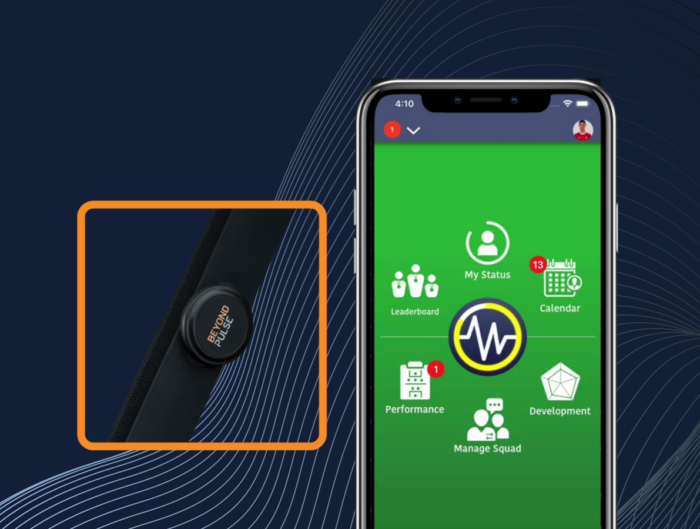For us high school coaches, the word periodization seems lofty, an idealistic concept reserved for the elite: professionals and college programs with sports scientists, or well-informed competitive youth soccer clubs. While we aim to use periodization to ensure the health and high performance of our players, reality often intervenes. Rainouts, heatwaves, religious holidays, and scheduling conflicts frequently derail our best-laid plans.
Imagine, if you will, trying to plan healthy meals for a busy family — an endeavor my husband and I embark on every week. Each week we lay out everyone’s practice and game schedules, decide on meals for each night, and create a grocery list. Between our two children who are both goalkeepers and heavily involved in year-round club soccer and other seasonal sports, and our schedules as head high school varsity coaches, meal planning seems essential to ensure that our jammed-pack schedules don’t prevent us from eating healthy dinners. Yet, inevitably, the carpool arrangements fall through, practice times get moved, or a last-minute GK training is added that kicks the meal plans to the curb.
I see this collapse of well-intended weekly meal planning to be similar to my effort to implement periodization plans as a Head Varsity Boys Soccer Coach at West Morris Mendham High School. Just as my family’s thoughtfully planned, nutritious meals are often forsaken for the allure of fast food lines, periodization strategies frequently fall by the wayside.
In this blog, I’m discussing why a concept like periodization, which science has shown is imperative for the health and recovery of our players, is something that seems so out of reach for high school coaches to prepare for and stick to. Through innovative strategies and dedication, effective periodization is achievable. As head boys’ coach, I’ve proven to myself that with the right tools and planning, these obstacles can be overcome.
Overview of Periodization Strategy
Preparing a schedule that heavily incorporates periodization is essential to protect athletes from overuse and overtraining, which can lead to injuries and burnout. High school sports schedules, often dense and unpredictable, necessitate the use of performance-enhancing technology. Tools that track Workload and Heart Rate metrics provide critical insights into player well-being and exertion levels, helping coaches make informed decisions. Learn more about periodization.
A Closer Look At High School Soccer
In New Jersey, the high school soccer season is intensely condensed, with teams potentially playing twenty or more games within an 8-9 week regular season. This schedule is designed to accommodate multi-sport athletes but often increases injury risks due to limited recovery times.
Challenges to Implementing Periodization:
- Heavy Game Load: Regular season games plus additional tournaments push teams to their limits.
- Referee and Field Shortages: Scheduling games becomes a puzzle, fitting matches into available slots without ideal recovery periods.
- Regulatory Constraints: New Jersey sports authorities mandate rest days and game limits, which adds another layer of complexity.
Prioritizing Player Health over Overscheduling in High School Soccer
Many coaches want to play more games to improve their overall record and have every chance of making states. While this is certainly understandable, instead shifting focus to the development and health of our players can also be a method of accomplishing those goals. Here are the strategies I use for implementing periodization:
Strategies for Implementing Periodization:
- Advanced Planning: Use the preseason period to strategically place games and practices on the calendar, prioritizing rest and recovery according to periodization principles.
- Flexible Scheduling: Adapt to changes and challenges by maintaining a focus on player health over squeezing in more games.
- Utilizing Technology: Leverage tools like Beyond Pulse to monitor workload and heart rate, adjusting training and gameplay based on real-time data.
Creating a visual reminder of the importance of periodization planning, has helped shift my priorities. When our schedule is released sometime in January, I immediately place my required conference, county, and state games on a calendar. However, rather than seeking out more games, I next add practices to the calendar and reflect on what the workload should roughly look like based on periodization theory. This action reshapes my mindset from what else can I fit into the schedule to what else should I fit in.
After adding in my thoughts on a periodization plan, if at that point I feel there is a large enough gap between games, then I seek out an appropriate game to fill it.


Periodization planning for a high school program can never be a perfect science. However, an early focus on periodization instead of cramming in more games when developing your season schedule can play a critical role in having a healthy and energized team in postseason play.
Leveraging Wearable Tech to Navigate High School Soccer’s Scheduling Challenges
A coach can create the perfect periodization plan for their season, but at the end of the day, as stated previously, so much is out of the high school coach’s control. We have all experienced games being moved for football games, religious holidays, and bad weather. This often compounds scheduling issues, which can lead to unhealthy situations where teams are forced to play six games in nine days (yes this actually happened!) Coaches must then make the undesirable choice between rest and training/game preparation.
Understanding Workload and Heart Rate
To manage these challenges effectively, understanding two key metrics—workload and heart rate—is crucial.

Heart Rate is equally vital as it provides insights into the cardiovascular demand placed on players during physical activities. Maintaining an optimal heart rate ensures that players are training within safe and effective zones, tailored to their fitness levels and the demands of the sport. High heart rate levels during games or training can indicate intense exertion, which might necessitate increased recovery time to prevent overtraining and burnout.
Workload refers to the total amount of physical stress placed on athletes during training and games. It is quantified using various data points, including the duration and intensity of the activity. Monitoring workload helps in ensuring that players are not overtrained, which can lead to fatigue and increased injury risk.
The workload metric specifically provides insights into the acute to chronic workload ratio—this compares the volume of workload undertaken in the short term (e.g., the last seven days) with the workload performed over a longer term (e.g., the last twenty-eight days). This ratio is pivotal in managing player load, particularly during weeks with multiple games.
By analyzing these metrics, coaches can identify players who are at risk of overtraining by exceeding their chronic workload levels. This insight allows for strategic interventions, such as resting players or modifying team training plans to ensure that all team members remain within healthy training thresholds.
How does this look in practice?
Preparing a schedule that heavily considers periodization is the first step in armoring yourself against overuse and overtraining that lead to injuries and burnout. High school sports schedules are often packed and beyond the control of coaches, making the use of performance-enhancing technology essential. Tools that track metrics like Workload and Heart Rate provide invaluable insights into the well-being and exertion levels of players.
Case Study: Intense Game Week of September 27 – October 4
During this challenging period, our team played four games within seven days. This packed schedule is a typical scenario where strategic periodization is crucial.
Data Analysis:
Player Workload and Heart Rate data indicated significant exertion spikes. For example, players’ heart rates peaked, spending an average of 42 minutes per session at over 80% of their maximum rate. This high zone indicates substantial cardiovascular strain.

The Beyond Pulse Dashboard employs visual indicators to denote these high-intensity moments, providing a clear visual cue of when players are nearing their limits.
The intense week of September 27 – October 4 is a perfect example of a period where careful periodization could mitigate risks and maximize performance. Here are the strategic takeaways from this data:
- Avoid Overtraining: With four games packed into just seven days, athletes are at a high risk of overtraining. Periodization helps in planning these high-demand periods with pre- and post-periods of lower intensity and volume. This allows athletes to recover and adapt.
- Strategic Peaking: Coaches can use periodization to prepare players to peak physically and mentally around crucial parts of the season. The high heart rate data indicating substantial cardiovascular strain suggests that the players were likely near their peak. Coaches need to ensure that such peaks align strategically with crucial games to optimize performance without compromising health.
- Recovery Planning: After observing significant spikes in heart rate and exertion, it’s crucial to incorporate adequate recovery phases. This might mean lighter training sessions, focused recovery techniques, or even complete rest days following such intense periods.
Case Study: Kaiden’s Standout Performance on October 25
On October 25, freshman Kaiden Reed demonstrated an exemplary performance in a game that required intense physical effort. The metrics collected on that day provide a snapshot of his high exertion levels and the consequential need for targeted recovery strategies.
Data Analysis:
Heart Rate Data: Kaiden’s heart rate data revealed that he spent 73 minutes above 80% of his maximum heart rate during the game. This indicates a sustained period of high cardiovascular effort.

Workload Score: He also recorded a workload score of 25, which quantifies the total physiological stress exerted during the game.

Both metrics signify a high level of exertion that surpasses typical game demands. Kaiden Reed’s intense game showcases the crucial role of periodization in minimizing risks and maximizing individual player performance. Here are the key strategic takeaways:
- Recovery Needs: Implement focused recovery strategies including active recovery, hydration, nutrition, and light cardiovascular work to alleviate muscle soreness and restore function.
- Monitoring for Future Sessions: Continuously monitor Kaiden’s physical responses post-game for signs of fatigue and adjust training loads as necessary to prevent overtraining.
- Mental and Physical Health Conversations: Use performance data for discussions on Kaiden’s health and well-being, setting realistic expectations and making decisions about his game participation based on his recovery status.
- Training Adjustments: Adjust Kaiden’s training intensity and volume in the following weeks to ensure he recovers fully and maintains performance throughout the season.
Final Thoughts
Implementing periodization in high school sports is not just about adhering to a set training schedule; it’s about adapting to the ever-changing dynamics of high school athletics while maintaining a focus on the health and performance of each athlete.
As coaches, our ability to integrate planning, flexible adjustments, and technology will ultimately dictate our success on the field. By embracing these challenges as opportunities for innovation, we can transform the unpredictable nature of high school sports into a structured platform where athletes can thrive.
Ultimately, the goal is that when the postseason comes around our players are healthy, energized, and ready to compete at their peak performance because we have successfully managed our challenging schedules, much better than I manage my weekly meal plans.

 FRA
FRA































